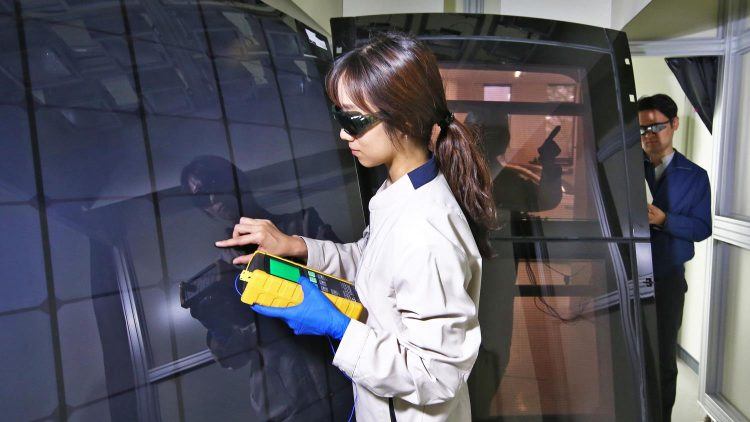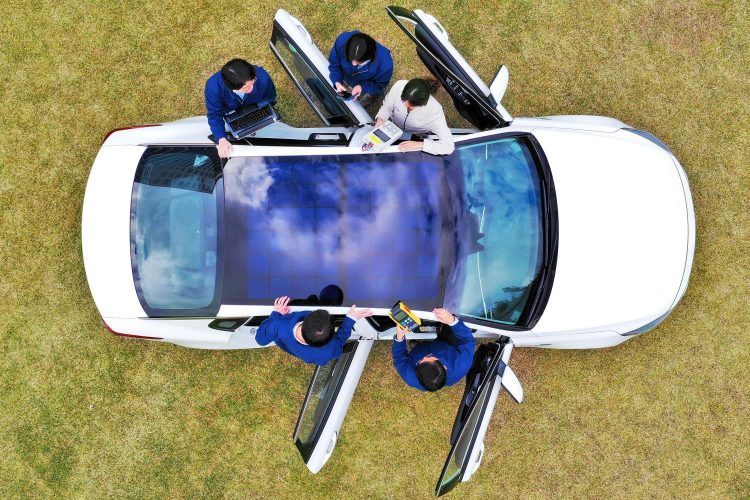- Emerging technology can charge a car’s battery via body or roof-mounted solar panels.
- The “translucent solar roof” is the first system of its kind for internal combustion engines.
- Hyundai and Kia say the solar charging systems will help reduce harmful CO2 emissions.
Hyundai and Kia will implement solar charging technology on certain Hyundai vehicles as early as next year. The electricity-generating solar panels, on either the roof or hood, will provide additional electrical power to increase efficiency and reduce CO2 emissions.
Hyundai are Kia are developing three types of solar roof charging systems, known as “generations.”
Generations One & Two
The first-generation solar roof system, applied to hybrids, includes roof-mounted silicon solar panels. The panels can charge 30 to 60 percent of the battery per day, depending on weather conditions and the environment.
By contrast, the second-generation “semi-transparent” roof system pairs with internal combustion engines. Unlike the first-generation system, the semi-transparent solar panels fit a panoramic sunroof. The idea is to maintain “transparency” while charging the battery. This way, drivers can still enjoy having the views a panoramic sunroof provides.

Hyundai and Kia say solar charging systems will help vehicles reduce CO2 emissions. Photo: Hyundai Motor Group.
Solar Lid
The third-generation, or “solar-lid” system, is undergoing a pilot study. Hence why Hyundai and Kia were slim on the details, noting only that it “mounts solar panels on the bonnet and roof in order to maximize energy output.”
“In the future, various types of electricity generating technologies, including the solar charging system, will be connected to vehicles,” explained Jeong-Gil Park, Executive Vice President, Engineering Design Division, Hyundai Motor Group. “This will enable them to develop from a passive device that consumes energy to a solution that actively generates energy.”
Related: Where are EVs most popular? The results of this study might surprise you?
How It Works
The charging systems have a solar panel, controller, and battery. Electricity is produced when sunlight hits the panel’s surface. A 100W solar panel – in 1 Sun standards (summer noon, 1000 W/m² intensity of radiation – produces 100Wh of energy per hour. In the controller, Maximum Power Point Tracking (MPPT), controls voltage and current to increase efficiency of the electricity in the solar panel.
The electricity is then transformed to the standard voltage by the controller and stored in the battery.
Hyundai will launch the first generation of this technology in 2019.
“The paradigm of the vehicle owner will shift from that of a consumer to an energy prosumer,” Gil Park said.
The Automoblog staff contributed to this report.
https://www.automoblog.net/2018/11/02/solar-charging-technology/

No comments:
Post a Comment